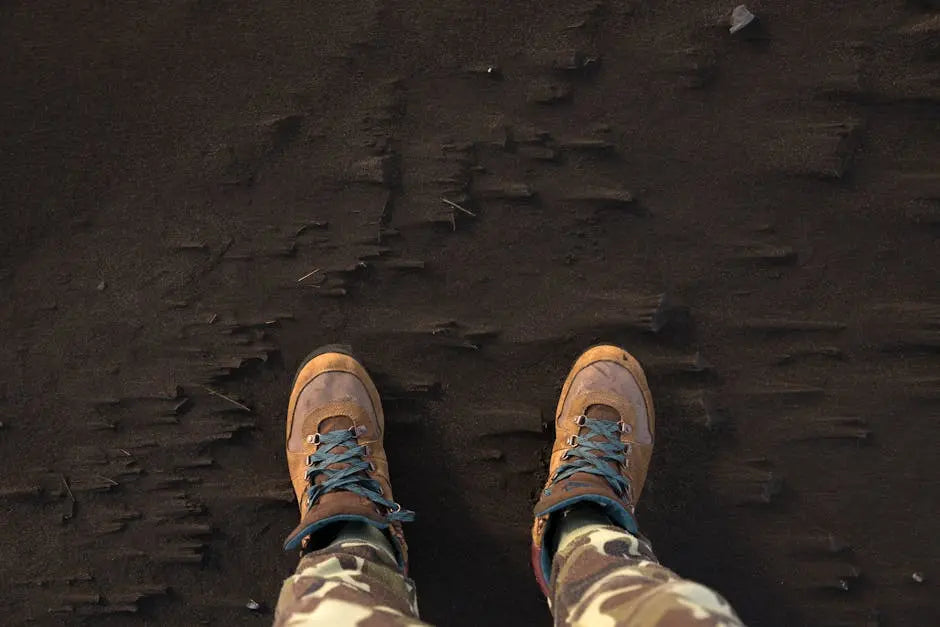
What Are Barefoot Trekking Shoes and Why Should You Try Them?
Discover the world of barefoot trekking shoes, a revolutionary approach to outdoor footwear that promises a more natural and fulfilling hiking experience. In this blog, we’ll explore what makes these shoes unique and why you should consider them for your next adventure.
What Are Barefoot Trekking Shoes?
Barefoot trekking shoes are designed to mimic the natural shape and motion of your foot, providing a lightweight and flexible alternative to traditional hiking boots. By stripping away excessive padding and arch support, these shoes encourage a forefoot or midfoot strike, aligning your stride with your body’s natural biomechanics. This minimalist design fosters a more intimate connection with the terrain, offering an authentic way to explore nature’s beauty.
Unlike conventional hiking boots, barefoot trekking shoes prioritize a minimalist approach. They are crafted to allow your feet to move naturally, akin to walking barefoot. This design philosophy not only improves your balance and stability but also increases awareness of the ground, making every step a deliberate and mindful experience.
Many outdoor enthusiasts are drawn to barefoot trekking shoes because they offer a closer relationship with the earth. These shoes are built on the premise that less is more, encouraging natural foot function that has been a part of human evolution for centuries. By wearing barefoot shoes, you’re letting your feet engage more actively and adapt to the terrain, just as nature intended.
Benefits of Barefoot Trekking Shoes
These shoes offer improved balance, a closer feel to the ground, and enhanced foot muscle strength, allowing for a more connected and responsive hiking experience. Proponents often cite increased proprioception—the body’s ability to sense its position in the world—as a key benefit, helping your feet adapt to various terrains more effectively.
One of the standout advantages of barefoot trekking shoes is their ability to strengthen the intrinsic muscles of the feet. Many users report a decrease in common foot ailments such as plantar fasciitis and Achilles tendonitis, as these shoes encourage a more natural walking and running style that reduces strain on the tendons and ligaments.
Moreover, barefoot shoes foster a sense of freedom and ease not found in traditional hiking footwear. The lightweight construction allows for a more agile and fluid movement, reducing fatigue and making long treks more enjoyable. The psychological benefits are notable as well – the act of trekking with such minimal interference can evoke a sense of liberation and a deeper connection with the surrounding environment.
How to Choose the Right Pair
Consider factors such as terrain, fit, and material when selecting barefoot trekking shoes to ensure maximum comfort and durability. It’s imperative to try on the shoes and assess how they feel during different movements, focusing on toe splay, flexibility, and sole thickness.
When evaluating potential pairs, pay attention to the terrain you’ll frequently encounter. Shoes with thinner soles offer greater ground feel, which might be preferable for softer surfaces like grass or sand. However, slightly thicker soles with lugs could provide better traction and cushioning for rocky or uneven trails.
The material composition of the shoe is equally important. Look for breathable and durable fabrics that can withstand various weather conditions while still maintaining a lightweight profile. Water-resistance might also be a factor if you’re planning to trek through wet or damp environments.
Additionally, take into account your personal preferences in terms of cushioning and arch support. While minimalist barefoot designs tend towards zero-drop and a bare minimum approach, those transitioning from conventional hiking boots might prefer a model with slightly more padding to ease the adjustment phase.
Tips for Transitioning to Barefoot Trekking Shoes
Gradually increase the wear time to allow your feet to adjust, and start with short hikes on familiar terrain to ease the transition. This gradual adaptation is crucial to prevent discomfort as your feet grow accustomed to the increased reliance on internal muscle strength and proprioception.
Experts suggest incorporating foot-strengthening exercises into your routine, such as foot doming, calf raises, and toe separations, to build the muscle groups needed to support barefoot trekking effectively. Strengthening your lower limbs prepares your body to handle the new dynamics of barefoot movement.
Run-walk methods can also aid in easing into barefoot trekking shoes. Alternating between brisk walking and short running intervals provides a balanced approach, allowing time for recovery and adaptation while still gaining the sensory benefits these shoes offer.
As you become more comfortable, increase the complexity and duration of your hikes progressively. Listen to your body’s signals—should any discomfort persist beyond the typical acclimation phase, consider rest and consultation with a professional to address possible form adjustments.
Embrace the Outdoors with Barefoot Trekking Shoes
Barefoot trekking shoes offer a unique blend of comfort, freedom, and connection to the terrain. Whether you’re an experienced trekker or a novice hiker, these shoes can elevate your outdoor experience and enhance your natural stride. Try them and feel the difference on your next trek.
- Choosing a selection results in a full page refresh.
!






















































